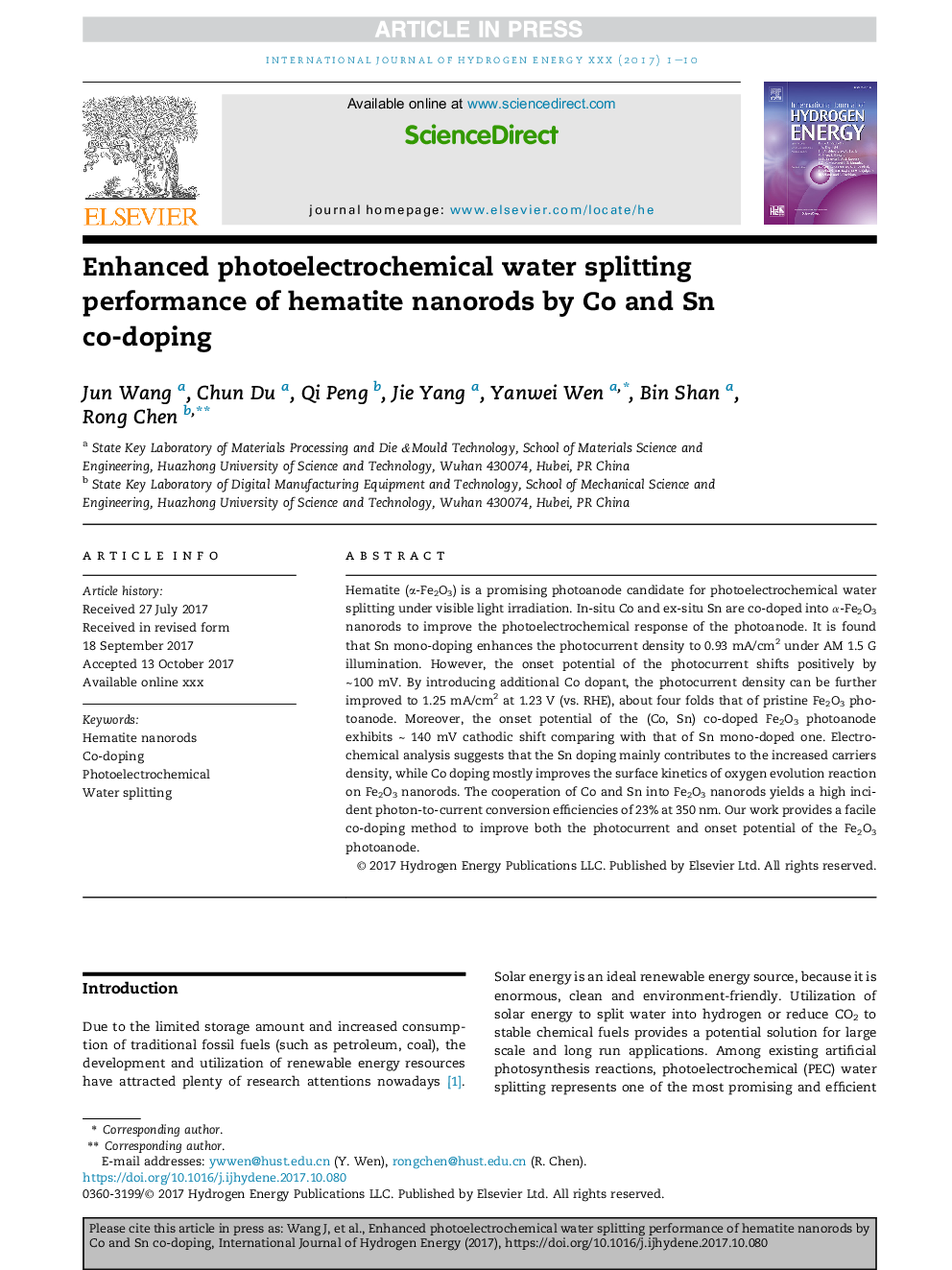| Article ID | Journal | Published Year | Pages | File Type |
|---|---|---|---|---|
| 7709037 | International Journal of Hydrogen Energy | 2017 | 10 Pages |
Abstract
Hematite (α-Fe2O3) is a promising photoanode candidate for photoelectrochemical water splitting under visible light irradiation. In-situ Co and ex-situ Sn are co-doped into α-Fe2O3 nanorods to improve the photoelectrochemical response of the photoanode. It is found that Sn mono-doping enhances the photocurrent density to 0.93 mA/cm2 under AM 1.5 G illumination. However, the onset potential of the photocurrent shifts positively by â¼100 mV. By introducing additional Co dopant, the photocurrent density can be further improved to 1.25 mA/cm2 at 1.23 V (vs. RHE), about four folds that of pristine Fe2O3 photoanode. Moreover, the onset potential of the (Co, Sn) co-doped Fe2O3 photoanode exhibits â¼Â 140 mV cathodic shift comparing with that of Sn mono-doped one. Electrochemical analysis suggests that the Sn doping mainly contributes to the increased carriers density, while Co doping mostly improves the surface kinetics of oxygen evolution reaction on Fe2O3 nanorods. The cooperation of Co and Sn into Fe2O3 nanorods yields a high incident photon-to-current conversion efficiencies of 23% at 350 nm. Our work provides a facile co-doping method to improve both the photocurrent and onset potential of the Fe2O3 photoanode.
Related Topics
Physical Sciences and Engineering
Chemistry
Electrochemistry
Authors
Jun Wang, Chun Du, Qi Peng, Jie Yang, Yanwei Wen, Bin Shan, Rong Chen,
